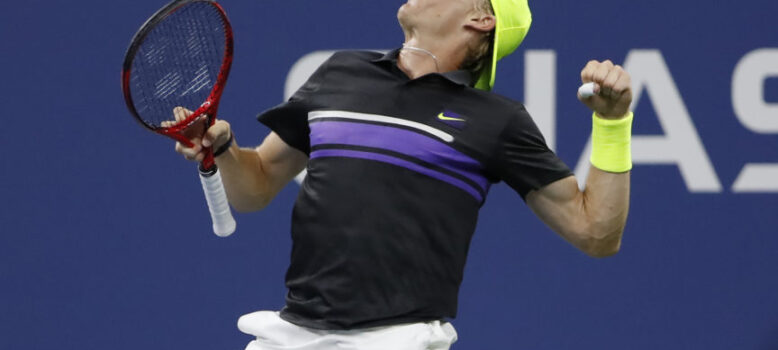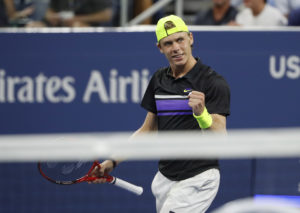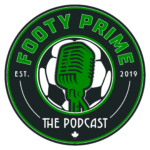

Denis Shapovalov didn’t turn the corner in Paris at the Bercy Masters. He did get a glimpse of the corner, so that he might be able to turn it in the future.
That is the best way to look at Shapovalov’s week in France, where he reached his first Masters 1000 final and hit a career-high ATP ranking of No. 15.
We can’t really say Shapo turned the corner, if only because he reached the final without playing (and beating) Rafael Nadal, who was injured when warming up for that semifinal on Saturday. Nevertheless, this was an enormously encouraging week for the Canadian, whose fundamental challenges are both substantial and obvious.
My colleague at Tennis With An Accent, Mert Ertunga, is a former tennis player and coach. Player, coach, commentator, writer — Mert has lived a life in and through tennis from various vantage points. He knows exactly what Shapovalov is going through and needs to improve on.
Mert expressed Shapo’s forward-moving week in Paris (that’s a double meaning, by the way) as follows:
Youzhny has obviously helped #Shapovalov but Denis's willingness to integrate transition into his game has been there for almost 2 years. That's a long-term process and it's beginning to bear fruits.
6-2 5-1 vs #Monfils #RolexParisMasters— Mert Ertunga (@MertovsTDesk) November 1, 2019
The notion that the term “forward-moving” is a double meaning can be explained very simply: Shapo moved forward not only in the sense that he improved, but also in terms of literally moving forward to the net to end points more quickly.
This is such a big key for Shapovalov, for reasons which are both obvious and subtle.
The obvious reason it benefits Shapovalov to move forward — and attack the net more — is that he can incorporate more tactical and shotmaking variety into his game. Every tennis player who aspires to improve must find more and more ways to win points. This is what defines Novak Djokovic, who defeated Shapovalov in Sunday’s Paris final. This is what defines Rafael Nadal and Roger Federer, the other two members of tennis’s “Big 3.”
They have eight or nine or 12 ways to reliably win points. Their opponents might have three or five or six at most.
If your serve is not popping, you can win with your groundstrokes. If your attacking shots aren’t accurate, you can win with defense. If your power game is misfiring, you can win with soft slices and chips.
The obvious point is that variety builds more ways to win points and matches.
The less obvious point with Shapovalov and attacking the net is this: It increases his margins for error.

What do I mean by that?
Anyone who has watched Shapovalov play knows that he has a go-for-broke game. He is like a home-run hitter in baseball, always taking big cuts. He either hits the ball 400 feet for a homer or strikes out on three pitches.
Given the hit-or-miss, high-risk nature of Shapovalov’s game, he could make two fundamental adjustments: Learn how to rally more consistently and play higher margin shots, AND — secondly — attack the net.
Notice that I said AND, not OR. It’s not a choice between the two. Shapo has to do both.
HOWEVER: Shapovalov is a fundamentally aggressive and attacking player. If you are an attacking player who plays great offense and isn’t as strong on defense, it is essential to maximize that attacking game.
A simply STUNNING display from Denis Shapovalov 🌟
🇨🇦 @denis_shapo will be the new Canadian No. 1 on Monday after defeating Monfils 6-2, 6-2 to make his fourth ATP Masters 1000 SF 👏
🎥: @TennisTV | @RolexPMasters pic.twitter.com/GW8sjdODob
— ATP Tour (@atptour) November 1, 2019
Attacking players who can hit opponents off the court with their power will elicit plenty of shots from opponents which are either short or slow. Opponents will either play defensive shots well behind the baseline which will land short inside the court, or they will hit floaters without pace (or both).
Against short balls or slow shots, an effective net game is the primary way to close down points quickly.
A good net game means Shapovalov won’t have to hit six or seven high-risk groundstrokes per point. Attacking the net behind a high-margin groundstroke with good placement can enable Shapo to hit two or three high-margin groundstrokes (still with good pace and placement) and finish a point much more quickly.
He can dramatically reduce his level of risk.
Aged 20 years and 200 days, Denis Shapovalov becomes the youngest player to reach the semifinals at four different Masters 1000 events since Novak Djokovic in 2007 (age 20 years and 151 days).#RolexParisMasters
— Bastien Fachan (@BastienFachan) November 1, 2019
Yes, Shapovalov’s volleying is a work in progress. He pushed a lot of volleys long in his round-of-16 win over Alexander Zverev on Thursday. However — and this is a huge deal — Shapo didn’t get discouraged by his missed volleys. He accepted what every tennis player must realize: Just because you failed on one point doesn’t mean you cease to use a tactic.
Shapo will practice his volleys in the coming offseason. If he can polish them, he could make substantial improvements in 2020.
He hasn’t turned the corner, but his driving skills are getting better. Paris showed that Denis Shapovalov is making necessary adjustments which could bear fruit in the course of time.
Matt Zemek
Matt Zemek has written about tennis professionally since 2014 for multiple outlets. He is currently the editor of tennisaccent.com and the co-manager of Tennis With An Accent with Saqib Ali. Tennis With An Accent blends Saqib Ali's podcasts with written coverage of professional tennis. The TWAA Podcast hosted Darren Cahill earlier this year. The podcast is distributed by Red Circle and is available on Stitcher, Google Podcasts, and Apple Podcasts. See Matt's pinned tweet on his Twitter page for links to the TWAA Podcast. Matt is based in Phoenix and thinks the Raptors winning the NBA title was awesome. Saqib will be covering Montreal for Tennis With An Accent.







